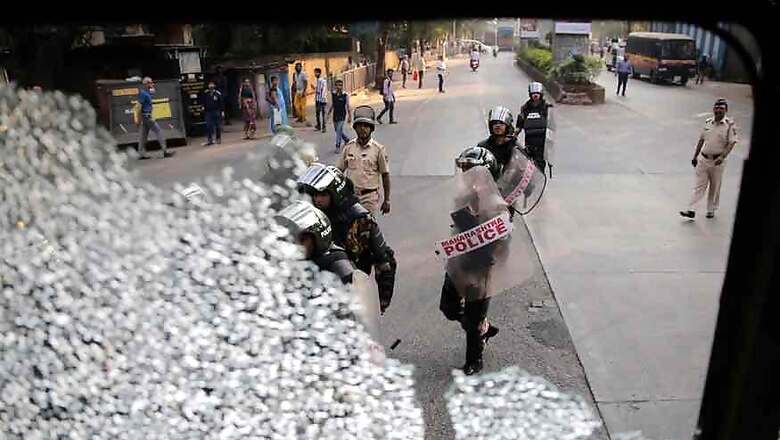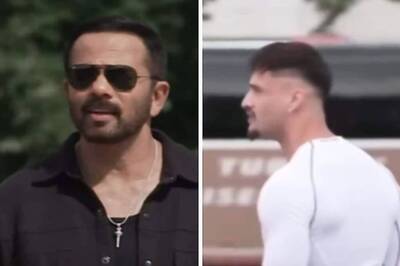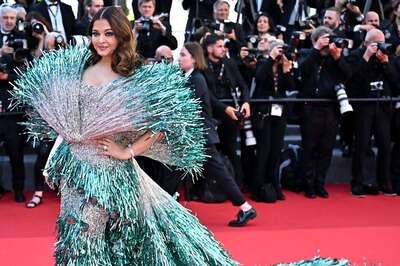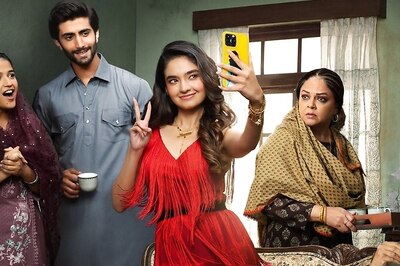
views
The Dalit organisations decided to observe the 200th anniversary of the Bhima-Koregaon battle that symbolically ended the Peshawai and marked the establishment of the British Empire. Peshwai or the rule of Brahmin Peshwas had intensified along with its infamous debauchery the caste oppression of the Dalits to the extent that they had to tie a pot round their neck to contain their spittoon and broomstick to their behind to sweep off their footprints lest they should pollute others.
They were summarily banned to walk on certain roads during mornings and evenings when shadows tend to get longer. The Peshwai thus came to symbolize personification of Manusmriti, the most hated text for the Dalits. It was natural, therefore, that the Dalits decided to observe the important occasion of the 200 years of the battle of Bhima-Koregaon.
It was not just the end of Peshawai that Dalits would celebrate. They believed that it was brought about by their forefathers, the Mahar soldiers who fought gallantly against the Peshwas’ army so as to liberate their people from the oppressive rule. The obelisk erected by the British at the spot bears the names of 49 dead in the battle on 1 January, 1818 of which as many as 22 have been identified to be Mahars by the suffix ‘nak’ in their names.
As the Gazetteer of Bombay Presidency (Vol. 18, Issue 2) records the battle was fought fiercely between Peshwa’s army of 25000 and the company troops, under Captain Staunton, comprising just 834 men, including around 500 soldiers of the 2nd Battalion of the 1st Regiment of Bombay Native Infantry, which was manned predominantly by Mahar soldiers. The battle lasted the entire day and in the evening Peshwa army withdrew, fearing the arrival of a larger British force led by General Joseph Smith.
This martyrdom of the Mahar soldiers was construed as their martyrdom in the cause of liberation of their castemen from the Peshwa’s oppressive rule by none other than Dr Ambedkar, who visited the obelisk on 1 January 1927 for the first time and kept visiting later. As it happened with the places associated with Dr Ambedkar, a small homage paying ceremony on 1 January observed by some people developed into an increasingly bigger congregation over the years. It has been happening over many years now and hence there was nothing novel if the Dalits wanted to observe the second century anniversary of the day with a new slogan to bury the new Peshawai that was resurging in the form of a Hindutva wave.
Some known agent provocateurs of this resurgent Hindutva, however, decided to challenge them. They planned to teach the Dalits a lesson. The villages nearby kept all shops closed. Over 50 vehicles were stoned and burnt, one Dalit was killed and several others injured.
It all began from a nearby village, Vadhu Badruk, some 4km away from Koregaon, where a samadhi (grave) of one Govind Gopal Gaikwad or Ganpat Mahar was devastated by a mob of some 200 people on December 29. Ganpat Mahar is said to have collected the remains of Sambhaji, son of Shivaji Maharaj when he was brutally killed by Aurangzeb. No Maratha would come forward braving the dictate of Aurangzeb to do the last rites on Sambhaji but this Mahar person said to have done it. He built a small grave for Sambhaji on his land that still stands in the Mahar quarters of the village. Later, when he died, his grave was also built nearby.
Certain Hindutva organisations sprung up in the area, decided to efface this association of a Mahar with Sambhaji. An FIR was registered against 49 people after the memorial of Ganpat Mahar was damaged at Vadhu Budruk. It is well known that two activists, one Manohar (Sambhaji) Bhide or Bhide Guruji, as he is known among his followers of Shivraj Pratisthan and another Milind Ekbote, who wore several saffron hats have been working in the area towards this.
The Hindutva connection of Bhide and Ekbote is not far to seek. Bhide, a dedicated Hindutva fanatic, revered by most BJP and Shiv Sena leaders, is attributed Hinduization of the area. Since he began his work and brought about a communal riot in Sangli in 2008, the BJP has permanently dislodged the Muslim representatives in elections. Ekbote, has been chief of several Hindutva outfits like Hindu Ekata Aaghadi, Pratapgadh Utsav Samiti, Gau Raksha Abhiyan and has as many as a dozen cases against him. On a complaint of a Dalit woman, both have been booked under the SC/ST Prevention of Atrocities Act, Arms Act, 307 (attempt to murder) of IPC and rioting.
Chief Minister Devendra Fadnavis shed enough crocodile tears as usual but would not speak a word on why his government failed to prevent it when preparations for rioting had gone on for days in the open. (Anand Teltumbde is a writer and General Secretary, CPDR, Maharashtra)



















Comments
0 comment